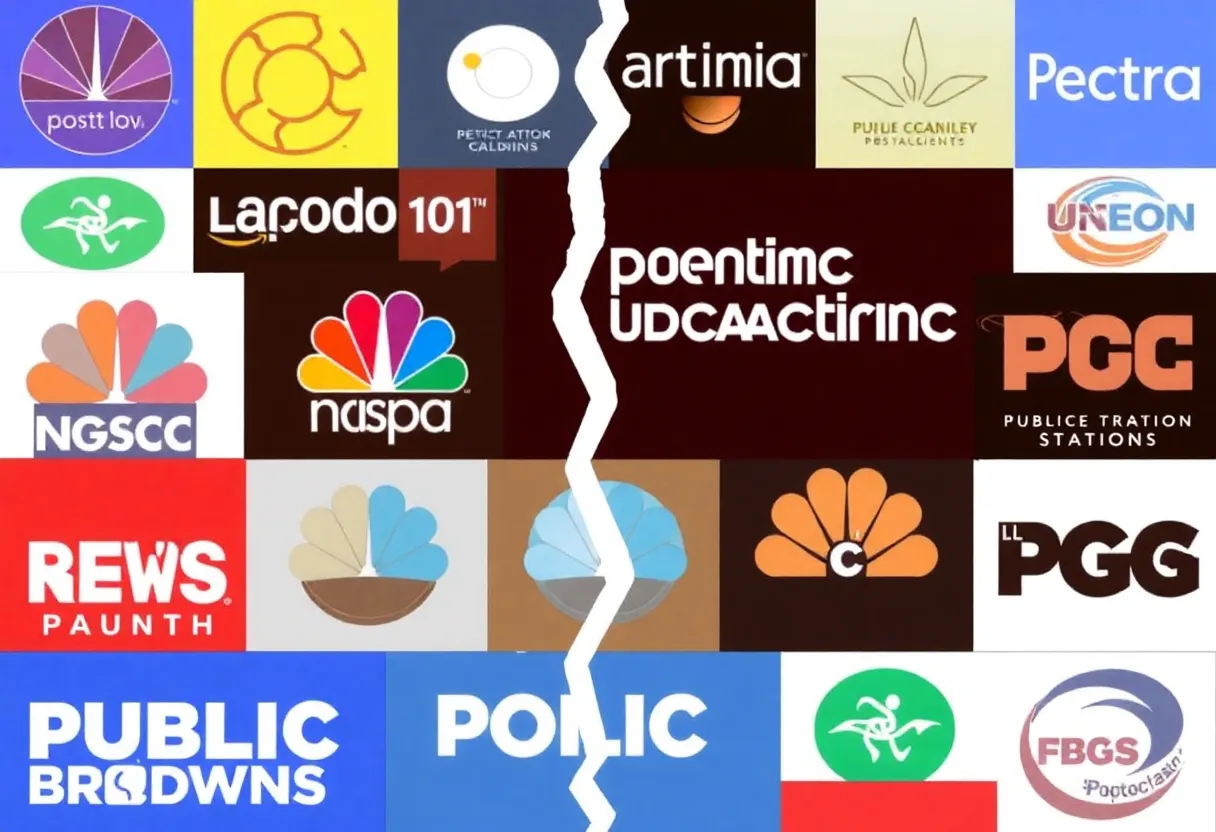News Summary
California public media organizations are in crisis following Congress’s decision to cut $1.1 billion in federal funding. Major outlets like NPR and PBS will see severe financial impacts, causing potential layoffs and programming reductions. Public broadcasting leaders warn that underserved communities will be disproportionately affected, highlighting the critical role these organizations play in local news and emergency alerts. The situation portends a future where public media struggles to serve the community effectively.
Los Angeles – Major cuts to federal funding for public broadcasting have left California public media organizations in a crisis. Congress has voted to cut $1.1 billion in federal funding, affecting National Public Radio (NPR), Public Broadcasting Service (PBS), and their affiliates. This decision, made during a narrow party-line vote, saw all nine California Republican representatives endorsing the funding cuts.
The financial implications of these cuts are significant. LAist, a major NPR affiliate in Los Angeles, is poised to lose $3.4 million over the next two years. Across California, public broadcasting stations anticipate severe financial losses, which are likely to lead to staff layoffs and programming reductions.
Public broadcasting leaders have expressed particular concern for rural and underserved communities, which they say will be disproportionately impacted. Critical services such as local news and emergency alerts are at risk, further emphasizing the essential role that public broadcasters play in these areas.
The Corporation for Public Broadcasting (CPB), which provides vital grants to public media organizations, is projected to suffer substantial losses in federal subsidies. Funding from the federal government contributes to approximately 10% of public radio station budgets and about 15% for PBS affiliates. This reduction puts numerous smaller public stations at immediate risk; for example, KEET-TV in Eureka could lose nearly half of its operating budget, jeopardizing its operational future.
Specific examples illustrate the widespread fallout of the funding cuts. KVPR Valley Public Radio has lost around $175,000, equating to 7% of its budget, highlighting its indispensable role in delivering local news, especially to communities often overlooked by larger media outlets. Similarly, KZYX in Mendocino has faced a 25% budget reduction, resulting in layoffs, including their news director, which compromises their ability to provide in-depth local news coverage.
KCBX in San Luis Obispo faces a loss of $240,000, roughly 13% of its operating budget, which will directly impact their capacity to broadcast essential emergency information. Even larger stations, such as KQED in San Francisco, are not exempt from these challenges, anticipating losses nearing $8 million due to the federal funding cuts.
The situation is dire for community support, as many public media stations now grapple with the necessity of raising funds to compensate for the lost federal support. The cuts have intensified conversations regarding the future viability of public broadcasting amid growing political pressures, with public media organizations identifying these funding reductions as an “irreversible loss.” This jeopardizes the mission of public media to provide equitable access to information.
Public broadcasters underscore their essential role in keeping audiences informed, particularly during emergencies, such as natural disasters. The impact of these funding cuts is widespread and profound, foreshadowing potential layoffs, diminished programming quality, and a decline in local news coverage. These consequences could severely affect community engagement and accessibility to vital information.
Another critical player facing challenges is Radio Bilingüe, a significant Spanish-language radio network serving rural communities, which is anticipated to encounter difficulties stemming from funding losses that could jeopardize local services. Overall, the repercussions of the federal funding cuts extend beyond financial figures, threatening the fabric of public media in California and its ability to serve the community effectively.
Deeper Dive: News & Info About This Topic
HERE Resources
Los Angeles Public Media Faces Funding Crisis
Tensions Rise in Los Angeles Amid Immigration Raids
UCLA Drops to Second Place in Public University Rankings
Federal Judge Orders Restoration of UCLA Research Grants
Los Angeles County Halts Seismic Retrofit on Gas Co. Tower
LAist Faces Major Funding Cuts from Congress
Guillermo Del Toro to Headline Benefit for Los Angeles Library
HBO Max’s ‘The Pitt’ Wins Best Drama at 2025 Emmys
Congressional Funding Cuts Threaten Local Media in LA
Supreme Court Halts Immigration Stop Restrictions in LA
Additional Resources
- LAist: NPR and CPB Clash Over Federal Funding
- Wikipedia: National Public Radio
- LAist: Congress Rolls Back $9 Billion in Public Media Funding
- Google Search: Public Media Funding
- LAist: Corporation for Public Broadcasting Announces Shutdown
- Google Scholar: Public Broadcasting Funding
- LAist: Analysis of Bipartisan Support for Public Media
- Encyclopedia Britannica: Public Broadcasting
- LAist: How Funding Clawbacks Will Impact Public Media
- Google News: Impact of Funding Cuts on Public Media

Author: STAFF HERE HOLLYWOOD
The Hollywood Staff Writer represents the experienced team at HEREHollywood.com, your go-to source for actionable local news and information in Hollywood, Los Angeles County, and beyond. Specializing in "news you can use," we cover essential topics like product reviews for personal and business needs, local business directories, politics, real estate trends, neighborhood insights, and state news affecting the area—with deep expertise drawn from years of dedicated reporting and strong community input, including local press releases and business updates. We deliver top reporting on high-value events such as the Hollywood Bowl summer concerts, the Hollywood Christmas Parade, film premieres at TCL Chinese Theatre, and festivals at the Magic Castle. Our coverage extends to key organizations like the Hollywood Chamber of Commerce and Visit Hollywood, plus leading businesses in entertainment, dining, and tourism that define the local economy. As part of the broader HERE network, including HERELosAngeles.com, HEREBeverlyHills.com, HEREAnaheim.com, and HEREHuntingtonBeach.com, we provide comprehensive, credible insights into Southern California's dynamic landscape.





